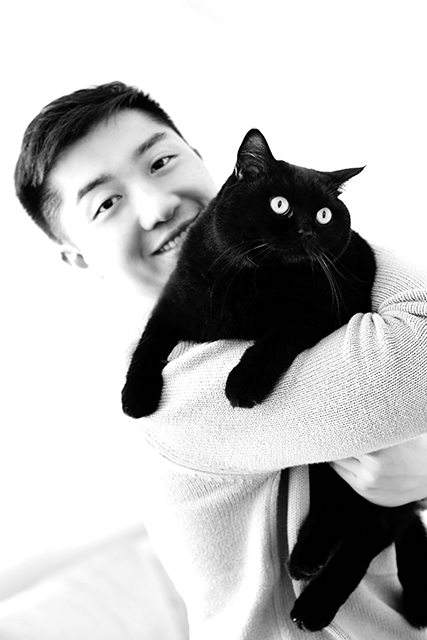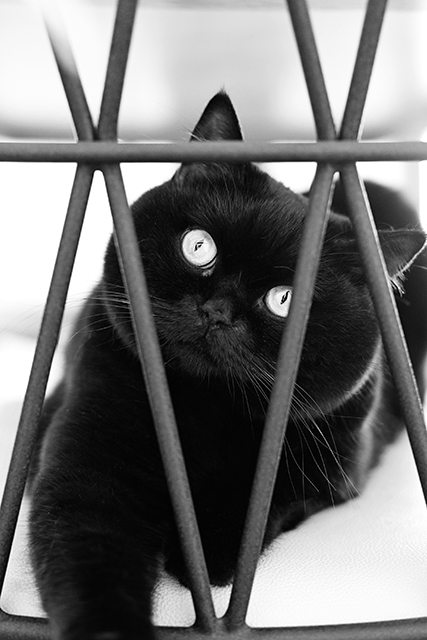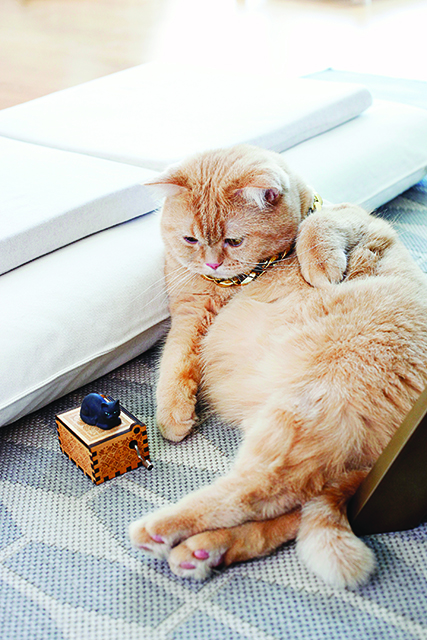The term chonk is defined by the internet as an aggressively chubby house cat and has been a part of my vocabulary for being awed by fat cats online. The cat community on social media has been known to glorify overweight cats. While chonky cats seem to look cuter than lean ones, I know fully well from experience that vets do not approve of fattening up our feline companions. Obesity is a complex disease, where accumulation of excess body fat increases the risk of a variety of health problems.

MEASURE UP
One way to check if a cat may be considered obese is when they weigh 20% or more above their ideal body weight. If you are not able to feel your cat’s ribs, the cat’s waist seems to have disappeared behind an obviously round belly, or fatty layers around the abdomen and face are present, then the cat may be grossly obese. The best method to assess what is normal weight for our cat’s age, size and frame is to enlist the help of a veterinarian.
Obesity can cause or predispose medical conditions, such as diabetes, feline lower urinary disease, hepatic lipidosis, and heart disease, just to name a few. It also reduces a cat’s life expectancy.
Once your cat’s optimal weight is determined by your veterinarian, a weight loss plan will be started. It combines feeding and exercise, both of which are carefully monitored so that weight loss happens gradually. You need to be transparent and honest with their vet and to discuss the type and amount of food your cat is eating, including treats.
Unfortunately, always keeping their food bowls full is not helpful, because there is no way to find out how many calories are being consumed by our cats. There is also no magic food that every cat can eat to their heart’s desires and still maintain a healthy weight. The vet will help identify and recommend which food may suit your cat best, including portion and meal frequency.

WET TRUMPS DRY
Canned cat food has lower calories than dry cat food, and it’s more beneficial because of its high moisture content. Treats are to be given sparingly (limit to about 10% of their diet) and integrated with an activity like playtime.
FOOD FOR THOUGHT
Food is our ally. It nourishes our most precious feline companions and gives them energy. To give them too much of a good thing is detrimental, wasteful, and uncreative.
There is an appropriate diet for every life stage of our cat. It is necessary to achieve balance, to make sure the calories they take in do not greatly exceed the calories they expend. Cats that only have eating as an activity are not happy cats. The sad reality is obese cats have a poor quality of life.

=
1.WALK THE TALK
Before you give in and reach for a treat or replenish their bowl for a second or third serving, know that food is only one of the many ways we can spoil our cats. Let them work for these tasty treats, let them follow you around the house before giving in.
2. THINK LONG TERM
It takes some serious self-control to keep their optimal weight. Let’s remind ourselves that our long-term goal is the gift of good health instead of the short-term aim of just pleasing and spoiling them.
3. MONITOR REGULARLY
Monitoring a cat’s weight will also help in determining if something is wrong as sudden weight loss may be a sign of an underlying medical problem.
4. PRACTICE SELF-CONTROL
Cats cannot discipline themselves to watch their food intake; it is all up to us. Putting bowls away and washing them after each meal will signal an end to their mealtime, so that they do not go back and forth letting you know their bowl is empty.
5. SET ASIDE TIME FOR FUN
Know that you can be creative when showing your love. We can give them some catnip, initiate play and give them our undivided attention. You’ll be surprised that they might just be bored and not really hungry.
6. PROVIDE AN INTERESTING ENVIRONMENT
Environmental enrichment is as valuable as healthy meals. Keep them entertained by installing perches and super highways that get their body moving and food digested. Having them chase a laser pointer or toy mouse will provide mental stimulation.
Apart from bellies being full, play increases their mojo and strengthens our bond with them – that is how they become generally happier cats.
7. SPEND QUALITY TIME TOGETHER
Giving gentle pats and chilling with them are enjoyable to both humans and cats, not to mention 100% calorie-free and fat-free.

IN A NUTSHELL
We’ve all seen that face of pure cuteness and anguish, as if the cats haven’t been fed for days – it’s the perfect face to tug at our heartstrings so masterfully. If your cat has also started trying to drop your stuff on the floor, or nagging at you nonstop to get your attention to get you to give them food, it only means they have already trained you to become a food dispenser.
The good news is obesity is a preventable disease. If our feline friend is eating appropriately-portioned healthy food and feeling their best self, we can enjoy how responsive and interactive they are – and that is ten billion times more satisfying than merely labeling them as chonky.






